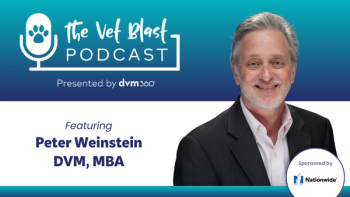
Questionnaires to Assess Pain in Companion Animals
Panelists B. Duncan X. Lascelles, BVSc, PhD, DACVS; Bryan T. Torres, DVM, PhD, DACVS-SA, DACVSMR; Margaret Gruen, DVM, MVPH, PhD, DACVB; Mark Epstein, DVM, DABVP, CVPP; and Sheilah Robertson, BVMS, PhD, DACVAA, DACAW, review different questionnaires available to assess pain in companion animals and the importance of validation of these questionnaires.
B. Duncan X. Lascelles, BVSc, PhD, DACVS: I want to go back to the questionnaires. Why do we want them to be valid? We want them to be valid because they’re measuring what we think they’re measuring—in this case, the impact of OA on the patients. That’s really important. So, let’s just talk a little bit more about the questionnaires that are available. Who would like to give us information on the questionnaires they use?
Bryan T. Torres, DVM, PhD, DACVS-SA, DACVSMR: Probably, the most meaningful one that I use is the Canine Brief Pain Inventory (CBPI).
Margaret Gruen, DVM, MVPH, PhD, DACVB: From the cat side, we use the Feline Musculoskeletal Pain Index and the client-specific outcome measures. One of the interesting things about validating any of these is that they’re valid for what they were developed for and in the method that they were developed for. So, if they’re on paper, then they’re validated on paper. Now, you’ve done it to a Cloud-based system, so you have to re-validate. Is the same questionnaire the same for a medication that’s given daily? We’ve proved efficacy when it’s a daily medication. Now, we’re giving something that you only give once-a-month. Is the same questionnaire going to do it? Those are all things we still need to understand more about, but I think that those are the tools that we have and we’re refining them going forward.
Mark Epstein, DVM, DABVP, CVPP: The CBPI was used for a recent approval. The FDA has not gravitated away from the force plate; I’m sure they are still utilizing that data. But with osteoarthritis—because it’s often a bilateral problem instead of a 1-knee issue—it has been used successfully to approve a recent pain drug in the veterinary market. I think that’s a direction that we’ll be going, as well.
B. Duncan X. Lascelles, BVSc, PhD, DACVS: Yes, and that makes sense because they’re saying everyone needs to be able to see the difference. And so they’ve asked that the owner questionnaires be used. Then, there’s also the Liverpool Osteoarthritis in Dogs index (LOAD). An important thing to mention is that all of these things have been produced in order to be used in practice. It’s really important to remember that those instruments are out there, and we can put a number on the disability. So, that’s a really important step forward.
Sheilah Robertson, BVMS, PhD, DACVAA, DACAW: But I think we have to accept that we’re also trying to look at an affective state, which is a very private and personal thing. And exactly as Margaret brought up, which was really important, we’re 1 step removed because our patients are nonlingual—they do have language, but it’s just not a language in which they can communicate with us. So, we have to understand what they’re trying to tell us. But we are trying to get an insight into their affective state, and that’s difficult in humans, sometimes, who are even self-reporting. Again, when you’re talking about crossover between veterinary assessments and human assessments, there’s a huge population out there in the human world who are noncommunicative, like the Alzheimer’s patients who have these diseases but can’t communicate. So, that’s a huge area where there could be great match-up of research into affective states—older humans who can’t communicate and our patients who can’t communicate.
Margaret Gruen, DVM, MVPH, PhD, DACVB: I think the incorporation of those health-related quality-of-life questionnaires and issues is really important. If you look at what owners report as contributing to their pet’s quality of life, they’re not all the things that we ask about on these questionnaires—like how well they go up and down the stairs. There are also variables that we consider, such as eating, comfort, or sitting in the sun. Those things are important to owners, as well, and we don’t capture those in our questionnaires that are strictly, really, about mobility.
Mark Epstein, DVM, DABVP, CVPP: Duncan, I would point out that this requires a real sea change in veterinary medicine. We are quite used to getting the image, pulling the lab work, submitting it, and getting the report back from the radiologist. I don’t even look at them anymore. I’m not saying that we don’t look at x-rays anymore, but it’s getting to the point that we rely on that data. This is really up-close-and-personal stuff. It’s going back to the roots of veterinary medicine, a little bit; and yet, the same problem exists in humans. If you go to your primary care physician, you’re not going to get the WOMAC (Western Ontario and McMaster Universities Osteoarthritis Index) scale put on you. But if you go to a rheumatologist, they’ll do it. So, we have to circle back and change how we think about getting this information, using these questionnaires and the activity monitors, perhaps, on a more regular basis, so that it becomes, for these pets—these particular at-risk patients or patients that you get a whiff that there’s a problem very early on—as regular and routine as lab work, radiographs, and ultrasound. We’re not there. We’re a long way from it, as a matter of fact, and I hope this conversation will help, maybe, propel that forward a little bit.
Newsletter
From exam room tips to practice management insights, get trusted veterinary news delivered straight to your inbox—subscribe to dvm360.



